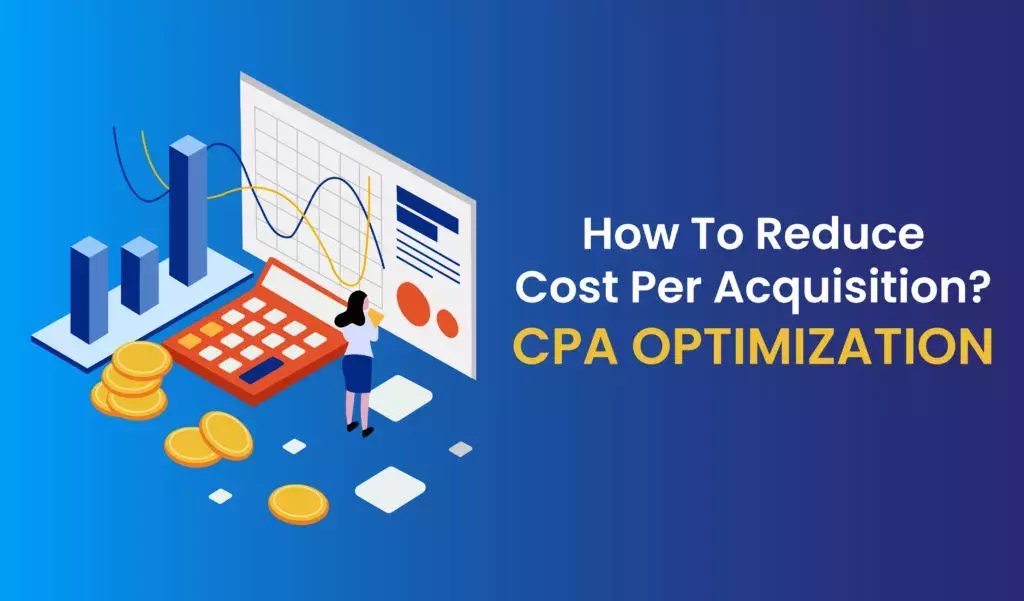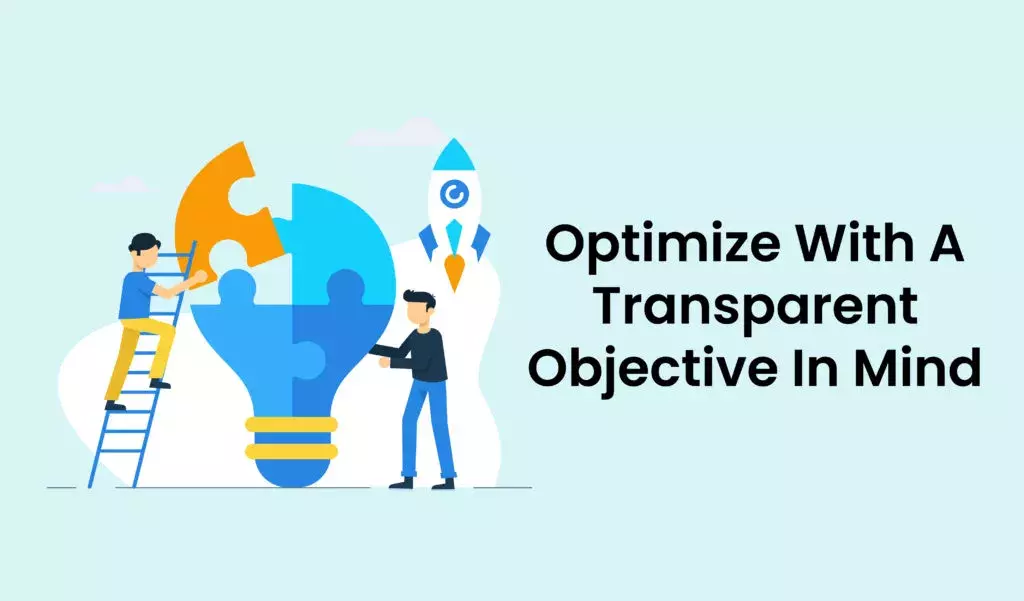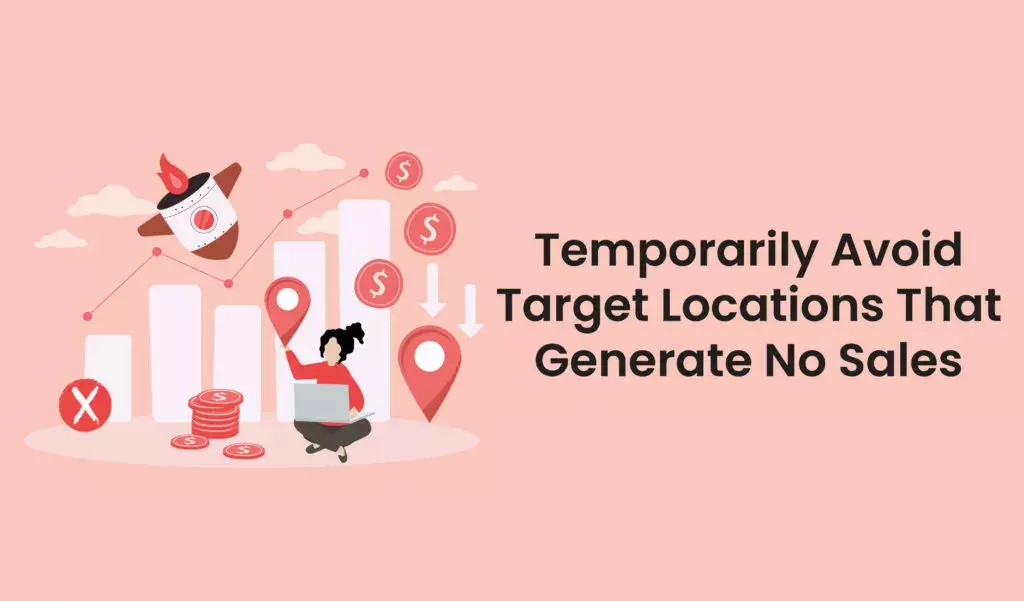How To Reduce Cost Per Acquisition? - CPA Optimization
Table of contents

The cost per acquisition, or CPA, is the amount of money spent on advertising or marketing to convert or acquire leads who click on your website or respond to your call to action (CTA).
Reducing your cost per acquisition (CPA) will enable you to increase your ROI without incurring additional costs for traffic acquisition. You can start controlling costs early on by giving the reduction of obtaining new consumers a top priority.
Cost per acquisition is a more accurate metric for measuring the conversion potential of your content, which provides a more accurate picture of whether your material is interesting and emotionally compelling enough to keep viewers interested and encourage them to purchase your good or service.
The ultimate goal for digital marketers is to drive the maximum conversions while maintaining a minimal ad spend. PPC advertising can be quite successful but can also drain your marketing budget if you don’t discover strategies to keep expenses down and maintain a good return on investment.
As we get started, the most crucial thing to remember is that your CPA will validate nearly all of your efforts, particularly in the case of sponsored media channels. It can independently verify or invalidate whole strategies based on your CPA targets.
Importance of measuring CPA
By monitoring CPA, marketers can assess the profitability of their advertising and marketing budgets. The significance of the CPA is that it prevents you from going over budget for new client acquisition. It is always advisable to base an advertising campaign’s efficacy solely on website traffic or conversion rate. Although the figures seem impressive, they do not indicate the campaign’s impact on income. By determining the CPA values, you may increase your company’s sustainability and create a thorough marketing plan to attract new clients.
What is bidding on actions by cost?
One kind of paid advertising that gives you fine control over your advertising budget is CPA bidding. You just need to pay for each conversion—a statistic you designate—for every campaign you launch when using CPA bidding. This might be a download, a sale, a lead, or any other conversion you specify.
You can save money by using CPA advertising instead of purchasing search terms that might not generate revenue. You won’t be charged if a searcher interacts with one of your advertisements and eventually converts, even if it appears in a SERP and doesn’t correspond with their search query.
When Should Cost Per Acquisition Be Used?
-
Pay-per-click
When it comes to PPC, it’s really easy. You are able to create a campaign that maximizes conversions while minimizing conversion expenses.
-
Affiliate marketing
In contrast to pay-per-click advertising, affiliate marketing often only costs for conversions rather than clicks or traffic. In this manner, you only agree to pay your affiliates for sales or leads rather than taking on the risk and expenses of obtaining traffic. It must be financially advantageous for the vendor to receive payment for driving traffic to your website.
-
Influencer marketing
The allure of influencer marketing is its ability to avoid paying for each and every click. Rather, you pay to publish a piece of writing or a series of pieces. To put it briefly, an intriguing CPA can result from a well-executed influencer marketing plan, the correct influencers (matched to profile + appealing campaign), but this is not the norm.
This is primarily due to the fact that attribution is involved: it’s true that a lot of people will visit the website straight after clicking the link in the influencer’s article. However, it also occurs that someone searches for the brand online or on social media after seeing the influencer’s post. Therefore, even in cases where the traffic leads to a conversion, the influencer campaign is rarely held responsible for it. When planning future efforts, marketers need to be aware of edge circumstances that could provide false outcomes.
-
Social media
As social media presence is an investment that takes time to pay off, it can be challenging to calculate the cost of “free traffic” and convert it into CPA. Due to the fact that sustained presence and profile development on a particular social media platform are prerequisites for the volume of sales and lead generation from this channel.
Therefore, you should be able to calculate an approximate CPA by dividing the monthly cost of keeping and running a profile by the total number of customers obtained through it. However, keep in mind that this is only an estimate meant to help you make decisions, not a 100% accurate statistic.
-
Content marketing
It can be difficult to measure CPA in the context of content marketing. If an article was developed internally, the cost can be calculated by adding up the man-hours spent writing the text or by examining the invoice from the content creation business we hired.
Effective Strategies to Reduce CPA

-
Boost Your Rating for Quality
User experience plays an important role in boosting the rating. Your ad’s effectiveness and clickability should increase after you’ve effectively improved the user experience and developed faster, more relevant keyword groups. Your Quality Score will rise due to this enhanced clickability and relevancy, reducing costs per click, conversion, and price breaks.
-
Put an End to Non-Converting Keywords for the Time Being
When discontinuing the use of a certain keyword, make sure you have carefully considered your goal cost per conversion as well as the conversion rate of your website.
Even keywords that haven’t directly resulted in a conversion or acquisition should still be evaluated for profitability because they may eventually generate leads. As you review your list of keywords, note which ones are performing the best, and use your search terms report to find additional keywords or similar matching types.
-
Examine Negative Keywords Frequently in Your Search Terms Report
Always check your search terms report for any irrelevant or unqualified searches. Search for and remove any terms that don’t align with your marketing goals.
In comparison to individuals who have already developed a strong online presence, you may need to evaluate your reports much more frequently if you’re working with a new brand or are just beginning to grow your online presence. Making sure that users you know aren’t relevant to your organization’s offers is the goal of negative keyword evaluation.
-
Increase the Effectiveness of Your Landing Page
When comparing the landing page’s effectiveness, you could also do an A/B test accounting for the success rate, figuring out and changing a single feature. According to Marketing Agency Jacksonville FL, Both landing pages have the same traffic, so compare the results and see which one performs better. This way, one can identify which landing page will be responsible for a lesser CPA and more conversions. Some pointers for landing page optimization:
- Include all the elements of an effective landing page: the headline, subtitles, information about the specific proposal, images, a space to enter the client’s details, success stories, etc.
- Ensure the form you incorporate for the consumer information collection is concise and comprises relevant questions.
- There should be a clear and well-thought-out call to action or CTA.
- Use the keywords from the particular call to action in the headline on the landing page.
- Please adhere to the point; make it as simple as possible.
- Introduce your offer by focusing on the particular problem and tell how your goods or services will help solve the problem.
- Perform side-to-side testing on your two distinct landing pages; the only difference is a single factor. You are asked to consider or scrutinize your results and work on them to avoid making the same mistakes in the future.
-
Increase the Effectiveness of Your Mobile Advertising
It gives a better user experience when a prospective lead can watch and possibly interact with a mobile-optimized advertisement on their device. There should be no excuse for usability to be sacrificed for any reason. It would be a mistake to think that if an advertisement is watched on a portable device, it is responsive to this format.
Develop a mobile advertisement that is friendly to be viewed in a mobile browser, and if a user decides to purchase, improve the experience to boost the probability of success.
-
Use of videos on the internet

Videos are one of the most effective content formats for boosting engagement rates and, as a result, contributing to ROI. The communication goals of successful video marketing are enhanced website traffic, duration of visits, and tangible leads.
To eliminate most of your competitors in handling most queries, integrate this with your other approaches to searching. Further, one can target YouTube searches for a specific region, gender, age group, etc.
-
Work with fewer keywords or bids
It is recommended that a Google Experiment be run based on the selected keywords to analyze how the ad rank influences CTR and conversion index. By using these results, you need to refine your keyword bids and eliminate keywords that completely turn out to be inefficient, and all they do is drag your marketing expenses. Some pointers for improving your keyword rankings, which will improve your CPC and CPA:
- Scan through the other statistics you might have considered but didn’t, and add them to your list of sought keywords.
- Concentrate on long-tail expressions, which are longer and more specific terms in many cases used by clients or potential customers who are ready to purchase.
- It is recommended that negative keywords are changed often to avoid the attraction of the resulting non-revenue clicks. Still, negative keywords are vital because they help focus only on the relevant keywords for the targeted audience, and negative keywords can eliminate phrases from one’s AdWords campaigns.
- Represents such scenarios or denies those terms that are not helpful for marketing goals.
-
Streamline the Checkout Procedure
Building trust with your customer relationship is essential. Technical turnoffs include things like website timeouts, crashes, and screen freezing. These things all contribute to a bad customer experience that makes customers leave your site entirely. Resolving these problems can significantly reduce your acquisition costs.
-
Attempt to Grow Your Email Database
Although it may seem outdated, email marketing is the only strategy consistently producing positive outcomes. Therefore, it would be a mistake on your part if you did not use this economic strategy in all your ongoing marketing activities.
Ensure you constantly attempt to obtain website users’ email addresses while gathering information about them. The more contacts you have on your email list, the less money you’ll need to set aside to rent social media, Google, and other ad platforms.
-
Employ Retargeting Strategies
Retargeting is achieved by introducing a retargeting tag to your website. The person who visits your website will then be added to your retargeting list and tagged. In essence, these are hot leads that you may follow up with an enticing offer. Retargeting strategies are beneficial and will undoubtedly aid in lowering acquisition costs and raising conversion rates. Retargeting is a useful strategy for businesses looking to stay in front of potential clients. Users frequently abandon unfinished tasks on websites and applications. A small prod in the correct direction can occasionally motivate consumers to finish a transaction they may have started but forgotten.
Businesses can use retargeting to persuade clients to reevaluate the value they provide. Customers who visit and remain on a business website are drawn to the offered products. Retargeting is a useful way to raise client conversion rates, among other tactics. Retargeting is a useful tactic because it enables businesses to create highly focused ads for potential clients. Get as much information about your consumers as possible to successfully retarget your leads. You must be aware of their actions, inclinations, driving forces, and more. It will be easier to retarget and convince potential clients to buy by using this data.
-
Stop Any Unprofitable Paid Campaigns Temporarily

Paid marketing initiatives, including ad groups, keywords, and other advertising, that haven’t produced any sales in the previous few months should be discontinued—at least temporarily—until you have an explanation supported by statistics for why these campaigns aren’t assisting with conversions.
You may want to revisit these campaigns to find fresh optimization strategies after determining which ones are the offenders and adjusting them until they are optimized for conversion.
-
Lower the percentage of cart abandonment.
One of the main issues that eCommerce firms deal with daily is cart abandonment. You must endeavor to lower your cart abandonment rate because it is a problem that could raise your cost per acquisition. You may lower your cart abandonment rate and, in turn, your cost per acquisition in several ways:
Streamline the checkout procedure. This can be achieved by ensuring that the checkout process is as straightforward as possible, avoiding surprise expenses, and avoiding the overuse of upselling. Retarget shoppers who left their trolleys empty. Remarketing, also known as retargeting, is an excellent strategy for returning customers to the funnel. You can use tools like abandoned basket emails to retarget your consumers.
-
Enhance Your Sales Channel
A business can handle a customer’s purchasing process more effectively with an efficient sales funnel. The method by which a company turns leads into paying customers is called a funnel. A strong sales funnel offers the company a wealth of data and a window into the minds of potential clients. It is feasible to comprehend the causes and incentives behind clients’ decisions to back out of a buy. Companies can determine which stages of a sales funnel are underperforming by using data analytics software. A SaaS business might provide the market with a top-notch subscription service. Through the identification of important areas for development, an optimized sales funnel can assist that business in growing sales. Among other things, retargeting is a good way to boost consumer conversion rates.
As per Digital Marketing Agency Jacksonville, Retargeting is helpful since it allows firms to produce highly targeted adverts for potential clients. Get as much data on your customers as you can in order to retarget your leads properly. You must know what motivates them, how they behave, and more. Using this data will make it easier to retarget and convince potential clients to buy.
-
Review prior tactics
It takes a lot to get better; knowing what has not been successful in the past is the way forward. That is why it is possible to consider strategies to enhance the outcome of conversions in the future, which is necessary to analyze past actions. You are ahead of rival firms looking for fresh methods to improve their conversion rates based on previous failures. The amount of high-quality products from previous successful techniques will increase the measure of conversion.
Technology Applications for the Management of CPAs
To manage and improve CPA, the right technology and tools for monitoring, analyzing, and optimizing the campaigns need to be employed. You can use the following tools to enhance the flow of your CPA management procedures.
-
CPA Tracking Platforms
This is a group of specialist software applications used to identify and assess campaign performance. The following wide range of features is offered: reporting that can be detailed, conversion tracking, and tracking that is real-time.
Companies might discover the work of highly effective platforms, comprehend the costs of acquiring each customer, and distribute capital in terms of CPA with CPA tracking applications. In addition, most advanced tracking systems provide information about consumer behavior and engagement and help to manage the company’s actions based on achieved analytics.
-
Automations in CPA Optimization
Automation technologies arrange real-time methods for campaign modifications and minimization of manual operations. Depending on such performance data, they adjust the placements, audience targeting, and bidding strategies through algorithms and artificial intelligence (AI).
With these tools, you can target your ads appropriately, give market responses correctly, and, in the long run, cut down your acquisition costs.
-
Management of CPA Through the CRM Systems
A customer relationship management (CRM) system is software that offers a central point for managing customers’ communication and data. They provide valuable information on consumers, purchasing behavior, lifetime value, and marketing activities.
This data can be used to optimize the methods and approaches of Acquisition, choose more accurately, and adjust the messages. Ensure you enhance your understanding of acquiring new customers’ costs and adapt the campaign to reflect all the changes. After the CPA has been determined, it becomes necessary to consider the relationship of CPA to other factors such as Customer Lifetime Value (CLV), sector-specific features, Repeat Purchase Rate, Churn Rate, etc. Given the above, it’s easier to have a better business outcome when the CPA score is low. Therefore, decreasing your CPA has to be part of the strategic plan of your enterprise’s list of priorities.
As stated more formally, a reduction in the cost per Acquisition will:
- Increase your ROI (return on investment) in a fair period of time.
- Engage in the enhancement of conversion rates.
- Help you to enhance the effectiveness of your marketing strategies and develop more rational expenditures of your marketing dollars.
- Improve the return on the investment in advertisements (ROAd).
- Minimize the Cost of acquiring Customers.
- Increase the revenues and earnings of your eCommerce business.
Which parameters are taken into consideration when calculating the quality score?
- The keyword’s quality: How creatively do you use the SEO keywords? Are these keywords short-tailed or long-tailed? How do they influence SEO? The response to each of these questions has the effect of increasing your quality score.
- Ad copy: To what extent do the advertisements you place correlate with the media content on your website or business? Is the publisher configured to use Google Ads networks?
- Landing pages: You are expected to know about affordable SEO services and the importance of a professionally built landing page. A perfect landing page also increases the quality score, greatly improving your website’s CPA.
If you cannot manage everything independently, you may seek the help of expert PPC management services.
Conclusion
For your eCommerce firm to flourish, you must lower your cost per acquisition. A low cost per acquisition is a sign of growing revenue and well-executed marketing. However, remember that marketing aims to influence people to take the desired action if you’re ever tempted to go on that bandwagon. In order to retain visitors to your site and encourage them to take action, you need to incentivize your brand to resonate with your target demographic. And use conversions as your reward rather than clicks.
According to Digital Marketing Jacksonville experts, there is no one-size-fits-all approach to lowering acquisition expenses. While some of the preceding advice may be helpful to you, not all of it will. It all depends on your particular circumstances, whether they are peculiarities specific to your industry that apply to others or distinctive situations that are relevant to your firm. The most crucial thing is to take a seat and give your team some time to talk about these strategies. When you can, put these pointers into practice, and always monitor the progress of your project.
Whenever possible, combine the rigors of A/B testing with these strategies for the most effective cost optimization. Track and evaluate the project’s performance, then utilize the information to adjust your paid advertising plan. Determine which mix of strategies can optimize expenses and lower your CPA.







